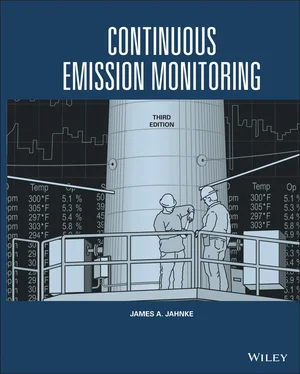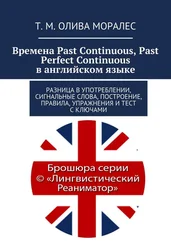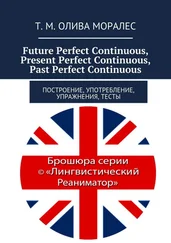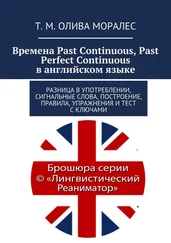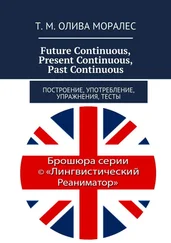James A. Jahnke - Continuous Emission Monitoring
Здесь есть возможность читать онлайн «James A. Jahnke - Continuous Emission Monitoring» — ознакомительный отрывок электронной книги совершенно бесплатно, а после прочтения отрывка купить полную версию. В некоторых случаях можно слушать аудио, скачать через торрент в формате fb2 и присутствует краткое содержание. Жанр: unrecognised, на английском языке. Описание произведения, (предисловие) а так же отзывы посетителей доступны на портале библиотеки ЛибКат.
- Название:Continuous Emission Monitoring
- Автор:
- Жанр:
- Год:неизвестен
- ISBN:нет данных
- Рейтинг книги:4 / 5. Голосов: 1
-
Избранное:Добавить в избранное
- Отзывы:
-
Ваша оценка:
- 80
- 1
- 2
- 3
- 4
- 5
Continuous Emission Monitoring: краткое содержание, описание и аннотация
Предлагаем к чтению аннотацию, описание, краткое содержание или предисловие (зависит от того, что написал сам автор книги «Continuous Emission Monitoring»). Если вы не нашли необходимую информацию о книге — напишите в комментариях, мы постараемся отыскать её.
The new edition of the only single-volume reference on both the regulatory and technical aspects of U.S. and international continuous emission monitoring (CEM) systems Continuous Emission Monitoring
Continuous Emission Monitoring:
Continuous Emission Monitoring, Third Edition
Continuous Emission Monitoring — читать онлайн ознакомительный отрывок
Ниже представлен текст книги, разбитый по страницам. Система сохранения места последней прочитанной страницы, позволяет с удобством читать онлайн бесплатно книгу «Continuous Emission Monitoring», без необходимости каждый раз заново искать на чём Вы остановились. Поставьте закладку, и сможете в любой момент перейти на страницу, на которой закончили чтение.
Интервал:
Закладка:
14 Brouwers, H.J. and Verdoorn, A.J. (1990). A simple and low‐cost dilution system for in‐situ sample conditioning of stack gases. In: Proceedings – Specialty Conference on Continuous Emission Monitoring – Present and Future Applications, 380–389. Pittsburgh: Air & Waste Management Association.
15 Chon, M. (2004). Simplify process analyzers with NeSSI. Control Magazine.
16 Defriez, H. (1992). Private communication.
17 Dubois, N. (2009). Rethink Sampling System Automation. Chemical pocssing.com/article/2009/096/?page‐full.
18 Dubois, N., van Vuuren, P., and Gunnell, J.J. (2004). Nessim Generation II Specification. Seattle. University of Washington Center for Process Analytical Chemistry. https://www.depts.washington.edu/cpac/NeSSI/documents/NeSSI_Gen_II_Spec_6_21_04.pdf(accessed 11 November 2021).
19 Dudley, T. and Cost, M. (2012). Eevolving applications that demonstrate the value of the Nessim platform – sampling system development for the field and laboratory. International Foundation Process Analytical Chemistry (IFPAC) Conference. Seattle. University of Washington Center for Process Analytical Chemistry.
20 Dunder, T.A. and Leighty, D.A. (1997). Comparison of thermoelectric and permeation dryers for sulfur dioxide removal during sample conditioning of wet gas streams. Paper presented at the Air & Waste Management Association meeting, Ontario. Pittsburgh: Air & Waste Management Association, 97‐MP7.04 (8–13 June 1997).
21 Dunder, T.A. and Stone, C.D. (1995). Permeation and adsorption of carbon monoxide in polymeric tubing used for extractive emissions monitoring applications. Paper presented at the Air & Waste Management Association Meeting, San Antonio, paper 95‐TA16B.02 (8–13 June 1995).
22 Fischer, B. (1993). External low flow dilution probe for extractive CEMS – field study and certification. In: Continuous Emission Monitoring – A Technology for the 90s, 329–337. Pittsburgh: Air & Waste Management Association.
23 Freitag W.O. (1993). Loss of SO2 by dissolution in the condensate of chilled sample line conditioners. Paper presented at Air & Waste Management Association meeting, Denver, paper 93‐WA‐172.02P (18–23 June 1995).
24 Geary, A and Sinada, C.D. (2018). Effects of sample conditioning on SO2 retention and measured emissions. Paper presented at the Power Plant Pollutant and Effluent Control MEGA Symposium, Baltimore (20–23 August 2018).
25 Gerhab, G.G. and Schuyler, A. (1996). Highly inert sample pathways, paper 96‐005. In: Proceedings of the Instrument Society of America, 43–58. Research Triangle Park, NC: ISA.
26 Green, D.W. and Perry, R.H. (ed.) (2007). Chemical Engineer's Handbook, 8ee. New York: McGraw Hill.
27 Hoard, J., Venkataramanan, N., and Marshik, B., and Murphy, W. (2014). NH3 storage in sample lines. SAE Technical Paper 2014‐01‐1586. Paper presented at SAE 2014 World Congress & Exhibition, https://doi.org/10.4271/2014‐01‐1586(accessed 11 November 2021).
28 Jahnke, J.A. (1997). Assessment of New and Alternative Continuous Emission Monitoring Systems. Palo Alto, CA: Electric Power Research Institute.
29 Jahnke, J.A. and Marshall, R.P. (1994). Pressure and Temperature Effects in Dilution Extractive Continuous Emission Monitoring Systems, TR‐104700. Palo Alto, CA: Electric Power Research Institute.
30 Josseau, M. (2009). Development in micro sampling solutions. Power Point Presentation. MicroReactors and Micro‐analytical Workshop, Rome (23–25 March 2009). Center for Process Analytical Chemistry.
31 Koch, M.V., Vanden Bussche, K.M., and Chrisman, R.W. (ed.) (2007). Micros Instrumentation: For High Throughput Experimentation and Process Intensification – a Tool for PAT. Wiley.
32 Mandel, S.B. and Gottlieb, M.S. (1995). Development of a close‐coupled multigas analyzer for continuous emissions monitoring. Paper presented at the Air & Waste Management Association Meeting, San Antonio, paper 95‐TA16B.04 (18–23 June 1995).
33 Marquardt, B., Thompson, W., Dearing, T. et al. (2009). Combining analytical sensors and new sampling/sensor initiative (NeSSI) to improve process understanding. Power Point Presentation. Micro‐Reactors and Micro‐analytical Workshop, Rome (23–25 March 2009). Center for Process Analytical Chemistry.
34 Marshak, B. (2015). Material and process conditions for successful use of extractive sampling techniques. Paper presented at EPA Region 6 – 25th Annual Quality Assurance Conferences (21 October 2015). https://www.epa.gov/sites/production/files/2015‐11/documents/c15‐marshik‐p2.pdf(accessed 11 November 2021).
35 Marshak, B. (2019). Lack of regulation of NH3 CEMS systems. Presented at the EPRI CEM Users Group Meeting, Birmingham, AL (8–9 May 2019).
36 McGowan, G.F. (1976). Discussion of Alternative Emission Measurement Schemes for Wet Scrubber Applications, Technical note. Englewood, CO: Lear Siegler, Inc.
37 McGowan, G.F. (1994). A review of CEM measurement techniques. Paper presented at Northern Rocky Mountain ISA Conference (6–8 April 1994). Research Triangle, NC: ISA.
38 McNulty, K.J., McCoy, J.F., Becker, J.H. et al. (1974). Investigation of Extractive Sampling Interface Parameters. EPA‐650/2‐74‐089.
39 Miller, S.B. (1994). Certification and utilization of multicomponent EPA protocol gases. Paper presented at EPRI CEM Users Group Meeting, Minneapolis.
40 Munukutla, S.S. (1992). Theory‐Based Evaluation of Pressure, Temperature and Density Effects on the Operation of the Dilution Probe, unpublished preliminary report. Palo Alto, CA: Electric Power Research Institute.
41 Myers, R.L. (1986). Field experiences using dilution probe techniques for continuous source emission monitoring. In: Transactions – Continuous Emission Monitoring – Advances and Issues, 431–439. Pittsburgh: Air Pollution Control Association.
42 Peeler, J.W., Jahnke, J.A., Juneau, P.J., and Kinner, L.L. (1997). Handbook – Continuous Emission Monitoring Systems for Non‐criteria Pollutants. EPA/625/R‐97/001. Washington DC: Environmental Protection Agency.
43 Pellikka, T., Kajolinna, T., and Perälä, M. (2019). SO2 emission measurement with the European standard reference method, EN 14791, and alternative methods – observations from laboratory and field studies. Journal of the Air & Waste Management Association 69 (9): 1122–1131.
44 Permapure (2019). All About NafionTM Tubing. https://www.permapure.com/nafion‐tubing(accessed 11 November 2021).
45 Podlenski, J., Peduto, E., McInnes, R. et al. (1984). Feasibility Study for Adapting Present Combustion Source Continuous Monitoring Systems to Hazardous Waste Incinerators. Volume 1. Adaptability Study and Guidelines Document. EPA‐600/8‐84‐011a. Washington DC: Environmental Protection Agency.
46 Reynolds, W.E. (1989). Field Inspector's Audit Techniques: Gas CEMS's Which Accept Calibration Gases. EPA/340/1‐89‐003. Washington DC: Environmental Protection Agency.
47 Robinson, W.R. 2010. Survey of umbilical line performance. Paper presented at the CEM User’s Group Meeting, Electric Power Research Institute Meeting, Cleveland (12–14 May 2010).
48 Romero, C.E., Yilmaz, A., Levy, E.K. et al. (1999). Analysis of sampling errors in dilution extractive CEM probes. Paper presented at EPRI CEM Users Group Meeting, Cincinnati. https://www.researchgate.net/publication/335365870(accessed 11 November 2021).
49 Romero, C.E., Sarunac, N., Levy, E.K., and Bilirgen, H. (2002). Techniques to improve measurement accuracy in power plant reported emissions. ISA Instrumentation Systems and Automation Conference, Chicago (October 2002).
50 Romero, C.E., Sarunac, N., Levy, E.K., and Bilirgen, H. (2005). Techniques to improve measurement accuracy in power plant reported emissions of NOx and SO2. Ingenieria Mecanica Tecnologia y Desarrolo 1 (6): 215–222. https://www.researchgate.net/publication/335365942.
Читать дальшеИнтервал:
Закладка:
Похожие книги на «Continuous Emission Monitoring»
Представляем Вашему вниманию похожие книги на «Continuous Emission Monitoring» списком для выбора. Мы отобрали схожую по названию и смыслу литературу в надежде предоставить читателям больше вариантов отыскать новые, интересные, ещё непрочитанные произведения.
Обсуждение, отзывы о книге «Continuous Emission Monitoring» и просто собственные мнения читателей. Оставьте ваши комментарии, напишите, что Вы думаете о произведении, его смысле или главных героях. Укажите что конкретно понравилось, а что нет, и почему Вы так считаете.
